Not Like Every Other Play...With 16 Basketball Play Tips to Score More Points
This is a great play for high school, college, and professional levels.
This is a highly effective multi-option play with scoring opportunities in the post and on the perimeter with misdirection and some of the best screening actions!
However, this article contains much more than a play... coaches at every level should study the tips below the video and diagrams!
In the video, coaching expert Tim Schuring demonstrates how to teach and coach the play. This will help you become a better coach in almost every aspect of the game!
But if you're not aware of these subtle coaching tips, you might completely miss them!
That's why we break down the video and the expert coaching tips step by step. This is below the video and diagrams. It might cause you to watch the video multiple times! It's worth it.
Here are a few things that you will learn...
- Exactly how to layer the teaching of the play so your players can learn at a much quicker pace.
- Teaching specific timing and specific player positioning between the passing, cutting, and screening that enables you to score more points.
- Designing your play while considering offensive rebounding and transition defense.
- How to flow smoothly into your half court offense if the play breaks down.
- Confusing the defense and making your team practically unguardable by teaching your players how to adjust on the fly....
- And much more!
"X" Play Instructions:
|
The play begins with a pass from 1 to 4. |
|
|
The 3 V-cuts or L-cuts to get open and receive a pass. After the pass is made, the 4 and the 1 both cut off the 5 at the high post, making an X. 1 stops at the block. 5 clears to the opposite corner. |
|
|
Once the players cut past, the 5 steps out and receives the pass. 5 then reverses the ball to the 2. As Coach Schuring says, up until this point, everything has just been window dressing. Very rarely will you get a basket off the high post cut. However, it's great action to distort the defense and get them out of position. That way, you can take advantage of the following actions. |
|
|
The 3 cuts off a flex screen set by 1. If 3 is open off the flex cut, 2 passes to 3. 5 immediately sprints down to set the screen for 1 (screen the screener action) for a three-point shot near the top of the key. If open, 1 shoots. |
|
|
If none of that is available, 1 reverses the ball to 5. 2 cuts off a double screen by 3 and 4. If open, 2 shoots. Transition to 5 Out Offense If the 2 doesn't get a pass, 2 continues to the corner and the other players shape into a 5 Out set. |
|
|
Transition to 4 Out, 1 In Offense Ball Screen Option for Corner: Here is one way to transition to the 4 out, 1 in offense. 5 passes to 2 in the corner. 5 follows the pass and sets a ball screen for 2. 1 fills the guard spot. 3 fills the wing. 4 fills the corner spot. After setting the screen, 5 can roll into the post area. |
|
|
Pass and Cut Option: 5 passes to 1. 5 cuts to the basket then posts up. |
|
|
Ball Screen Option for Top: 5 passes to 1. 5 follows the pass and sets a ball screen for 1. 5 rolls to the basket then posts up. |
|
Coaching Plays Like An Expert - 16 Basketball Plays Tips That Leads To Quicker Learning, Better Execution, and Your Team Scoring More Points During the Game!
Next, we're going to point out some important coaching tips as Coach Schuring takes you through the play. It's not the play that matters. It's how you teach and coach the plays that matters!
And some of these things are so subtle that you might completely miss them!
If you want to teach plays like an expert, be sure to read below.
This is also very important to help you see what we're talking about...
If you can view multiple windows at once like at a desktop, click here so you can open two browsers and view them side by side.
Or grab a second iphone or tablet. That way, you can watch the video as you go through the tips again! That's what I did.
Basketball Play Tip #1 - Initially, Walk Through the Play at a Slow Pace
This occurs from 0:00 to 1:55 in the video.
Coach Schuring walks the players at a slow pace through the play. This might seem obvious to veteran coaches, but it's a very important thing to do. While you move slower at first, it will actually improve the retention so players will learn the pattern more quickly.
Basketball Play Tip #2 - Run Through Entire Play at Full Speed
This occurs from 1:55 to 2:17 in the video.
After running through the pattern in slow motion, next you progress to full speed. This ensures that your players understand the pattern of the play and can execute it at full speed.
Basketball Play Tip #3 - Focus on the Pattern First
This occurs from 0:00 to 2:17 in the video.
Notice, Coach Schuring didn't talk about multiple options and adjustments. He didn't progress to mastering the little details of timing, spacing, screening, and cutting.
If you progress too quickly, this can overwhelm and confuse the players. Thus, slowing the understanding and learning of the play. This leads to inefficiency in practice.
Basketball Play Tip #4 - Understand the Little Details of Timing, Spacing, and Screening That Make the Play Successful!
By focusing on the little details of positioning, timing, spacing, and screening, you improve your chances to succeed!
Timing of 1/10 of a second can lead to an easy basket... or a turnover because you were too slow, missed the open player, and the defense recovered in time.
Proper positioning and spacing can provide the extra few inches or feet... allowing a player to squeeze by the defense and get to the rim.
Executing a proper screen can delay the defense just enough to get enough space for an open shot.
So make sure you understand these things ahead of time before implementing a play. All plays look great on paper or on video!
Example: Mastering Little Details (2:22 to 2:47)
Timing, spacing, and positioning - Here, Coach Schuring discusses the timing of 3 cutting and 4 passing the ball to 3.
You want to emphasize and practice that 3 is getting open as 4 catches the ball. That way, 4 doesn't have to pause and can immediately pass the ball. Also, if 3 gets there too early, it can give the defense time to recover and disrupt the pass.
Additionally, to ensure proper spacing and positioning, Coach Schuring tells the 3 to catch the ball near the free throw line extended.
Basketball Play Tip #5 - Immediately Practice the Coaching Point Discussed Then Stop
When you discuss one or two details to master, don't wait. Immediately practice that before running the rest of the play and covering other coaching points. You want to know that the players understand and can execute properly!
In a way, this is another walk through. But instead of walking through the pattern, you're walking through the coaching points. However, the players execute each coaching point at full speed. They just pause before going to the next coaching point.
This helps with efficiency and time!
That way, you don't have to run through the plays 15 times to emphasize all of your key coaching points!
Example: Practice Coaching Point Immediately Then Stop (2:47 to 2:53)
After talking about the timing and positioning of 3 cutting and getting open, Coach Schuring immediately has 3 and 4 execute the cut and pass.
Then Coach Schuring immediately stopped the play at that point. Then he moved onto his next coaching point on the play.
"Stop" or "Freeze" are great words to teach to your players. Make sure to talk about this ahead of time. That way, they immediately know what to do.
How much should you teach before progressing?
The amount of points you want to cover before progressing to the next point will depend on your team's IQ and age level.
For some teams, you might have to slow down and address one or two coaching points each day over multiple days. And you might have to address one point at a time.
For advanced players, you might be able to quickly address a few of these points at the same time like Coach Schuring does in the video. Then run through the play at full speed. This happens next.
Multiple Examples: Mastering Little Details
From 2:54 to 3:41, Coach Schuring focuses on one to two coaching points, executes it properly, then moves onto the next coaching points.
Full speed and positioning of cut (2:54 to 3:03) - At this time, it's a great time to emphasize going full speed. He also explains that you also want the players to cut over the top of the post player at the free throw line.
Timing of pass and ball reversal (3:03 to 3:18) - The ball reversal must happen quickly. That allows the flex action to be more effective. That way, it gives the wing time to pass the ball to the cutter coming off the flex screen. If it's too late, even if the player was initially open, it gives the defense time to recover and steal or disrupt the pass.
The timing of the screen (3:18 to 3:25 ) - For the screen the screener action, Coach Schuring emphasizes that the second screener needs to sprint down immediately after the pass. That way, you screen the defense when they're still scrambling from defending the flex screen and cut. This makes it harder for the defense to properly position themselves to fight through the second action of screen the screener. It also increases the chances of a mistake by the defense.
Positioning of screeners (3:25 to 3:41) - Now, Coach Schuring addresses the position of the two screeners for the double screen. He states the screeners need to be above the block. This enables proper spacing for the cutter to come under the screen. That way, the cutter is not directly under the basket where a recovering defender can more easily block the shot.
Basketball Play Tip #6 - Review of Key Coaching Points Again
This occurs from 3:41 to 4:00.
Before running through the play at full speed, Coach Schuring verbally reviews all of the key points with the players again.
This just further ingrains the coaching points into the player's head.
Basketball Play Tip #7 - Run Through Play Full Speed While Focusing on Coaching Points
Next, you might want to run through the entire play to make sure all of the coaching points are being properly done.
Or like in the video, you can run through each scoring option before running through the entire play. It's hard to tell if this was intentional in the video or if Coach Schuring just went with the flow. In the video clip, the player passed the ball on the flex cut and it did not appear to be expected. This occurs from 4:00 to 4:12.
This isn't a big deal as a skilled coach can still emphasize all of the teaching points just covered as you go through the multiple options. Which leads to another coaching tip...
Basketball Play Tip #8 - Go Through Each Scoring Option
It's important to cover each scoring option at full speed. That way, your players fully understand each scoring opportunity. Like mentioned above, you can do it in any order that you feel comfortable, just make sure to emphasize the coaching points.
Flex Cut (4:00 to 4:12)
Screen the Screener (4:16 to 4:32)
Double Screen - Entire Play & Into Half Court Offense (5:00 to 5:36)
Basketball Play Tip #9 - Positioning the Players to Maximize Offensive Rebounding and Transition Defense
From 4:32 to 4:58, Coach Schuring talks about the positioning of his players. You can see that the three screeners are positioned close to the basket. And they're positioned to get a rebound from all three main angles of the basket. Additionally, you have a player at the top and a player on the wing for transition defense.
So that's always something to keep in mind when designing a play. Does it put you in good offensive rebounding position? Can you still protect the basket in transition?
Basketball Play Tip #10 - How to Flow Smoothly Into Your Half Court Offense If the Play Breaks Down
From 5:00 to 7:04, Coach Schuring killed two birds with one stone.
He ran the entire play then progressed to practicing the transition into your half court offense.
It's important to practice transitioning into half court offense because the play doesn't always work right away.
It's important to keep the flow of the offense moving. This keeps the defense off balance. And the defensive breakdown may not happen during the play, it may happen after the play! You don't want to wait and allow the defense to get set.
Transition into 5 out half court offense (5:00 to 5:36)
Transition intro 4 out, 1 in half court offense (5:36 to 7:44)
Basketball Play Tip #11 - Teaching Multiple Options for Transition Into Half Court Offense
From 6:04 to 7:44, Coach Schuring covers multiple options to transition into your half court offense. This included multiple ball screens and a basket cut. However, the combination of cuts and screens are endless if you teach your players universal offensive concepts.
As Coach Schuring says, by making things "muddy" or unpredictable, the defense has a lot more difficulty stopping you.
Basketball Play Tip #12 - Finish the Play
You might've noticed that Coach Schuring likes to finish the plays with a made basket with offensive rebounding. You might do this, so your team builds confidence by seeing the ball go through basket. Additionally, it builds that aggressive mentality of not quitting until you score or the ball has been secured by the defense.
Basketball Play Tip #13 - Teach Without Defense First
When first exposing the offense to a new play, I believe it is important to remove the defense. After the pattern of the play has been learned, then it's up to you.
Some will cover the key coaching points with defense present. Some won't.
Basketball Play Tip #14 - Practice the Play Against Defense!
Due to time constraints, it wasn't possible to demonstrate every play against a defense within the offensive video set.
However, it's very important to practice your new plays against live defense. Otherwise, it will be much harder for you to execute during a real game. So many things change with a defense present!
Here are some ideas on how to do so.
Immediately practice against defense for multiple repetitions - Even though this isn't perfect because the defense will know the play. It's still best to practice against a live defense immediately after you teach the play. The play is still fresh in the player's mind and this improves retention.
Hide play during intra-squad scrimmage - Take the offense to the side and figure out a way to hide the play during an intra-squad scrimmage. That way, the defense doesn't know it's coming.
You might give it a different name or use the name of another play that you already have.
You could tell them to run the play after the next dead ball.
You could even stop play when the other team has the ball so they think it's a defensive adjustment.
Friendly scrimmages against other teams - Set up friendly scrimmages against other teams in the area to practice your plays. If possible, select teams not on your schedule and in your playoff district. If you don't have that luxury, you should avoid teams in your playoff district and scrimmage against teams in your conference.
Basketball Play Tip #15 - Tell, Show, Do
This helps with the different types of learners! Some learn by hearing. Some learn by doing. Some learn by seeing. So it's very important to do all of these things when teaching to your team. This will only speed up the retention for your team.
It only takes one mishap by one player to mess up the play so it's very important to reach all of the players with different teaching styles.
Basketball Play Tip #16 - Bring Your Play Notes to Practice
Have notes of all of the steps of the play and key coaching points available as you teach the play. You can use your smartphone or a piece of paper.
There is no shame in doing this! You're not taking a board exam.
Unless you've run the same play for years, it's easy to forget a little detail here or there. Personally, I need notes while going through new plays.
It only helps ensure that your team runs the play the right way and makes you better!
Review: Basketball Play Tips for Better Execution to Score More Points!
So let's review these main points for teaching the play...
1. Walk through the play. Only focus on the pattern.
2. Run through the pattern at full speed.
3. Walk through the coaching points while running the play. Stop at each coaching point.
4. Review coaching points.
5. Run through the play at full speed.
6. Cover each scoring option.
7. Demonstrate how to transition into your half court offense. Teach universal offensive concepts that make you unpredictable.
8. Practice the play against defense.
Then here's some additional things you can do...
- Ahead of time, understand the little details of timing, spacing, positioning, cutting, and screening that make the play successful.
- Use a play that puts you in a good position for offensive rebounding and transition defense.
- Make sure each repetition is finished with a made basket.
- Initially, teach without a defense. Then make sure to practice the play against a defense.
- To help teach all types of learners; tell, show, and do.
- Bring notes with play and key coaching points.
Review: Basketball Play Tips for Better Execution to Score More Points!
Here is a review recently. It was referring to the 5th video which covered quick hitters and plays for Tim Schuring's Complete Offensive System. This video clip also came from it as well.
"Simply excellent. This could be a standalone product. I will say his SLOBS and BLOBS are more targeted towards high school level play, as many of the primary options involve freeing up an outside shooter. The plays seem effective and has great considerations to avoid getting scouted. The press breaker is simple yet effective. If you are a coach that enjoys staggered screens, it is important to know he tends to favor those actions in his sets. Overall, even if you don't use everything out of this DVD, there are some valuable concepts for selecting sets in your offense."
- Coach K from Flushing, MI
If you'd like to jumpstart your offense, click here.
What do you think? Let us know by leaving your comments, suggestions, and questions...
|
|||

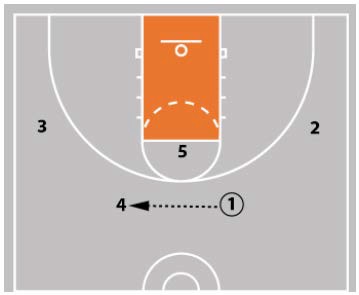
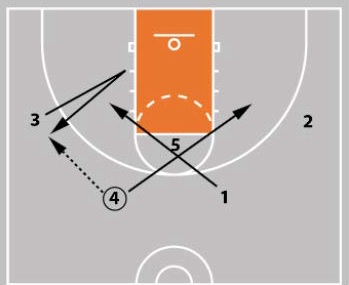
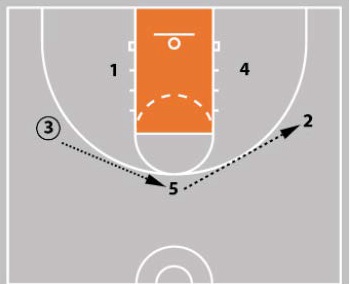
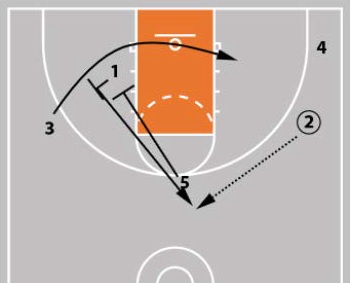
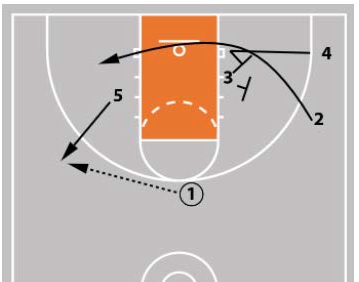
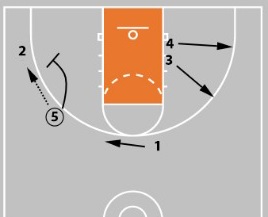
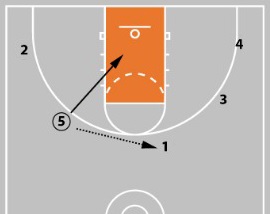
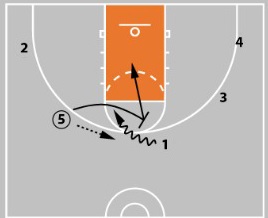

 Facebook (145k Followers)
Facebook (145k Followers) YouTube (152k Subscribers)
YouTube (152k Subscribers) Twitter (33k Followers)
Twitter (33k Followers) Q&A Forum
Q&A Forum Podcasts
Podcasts